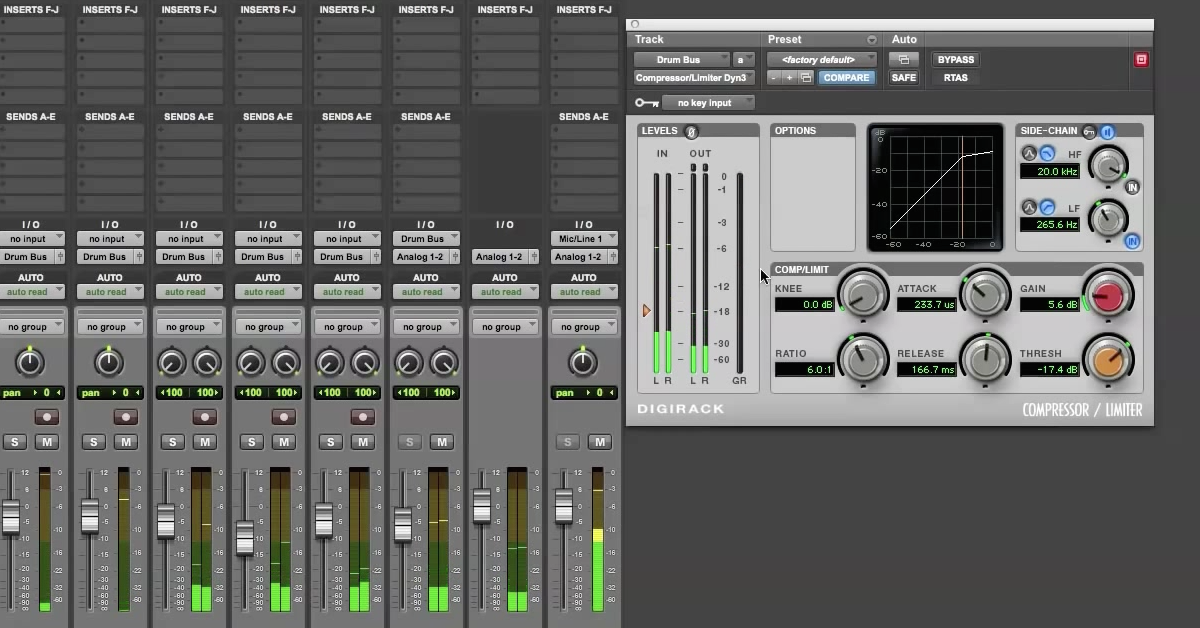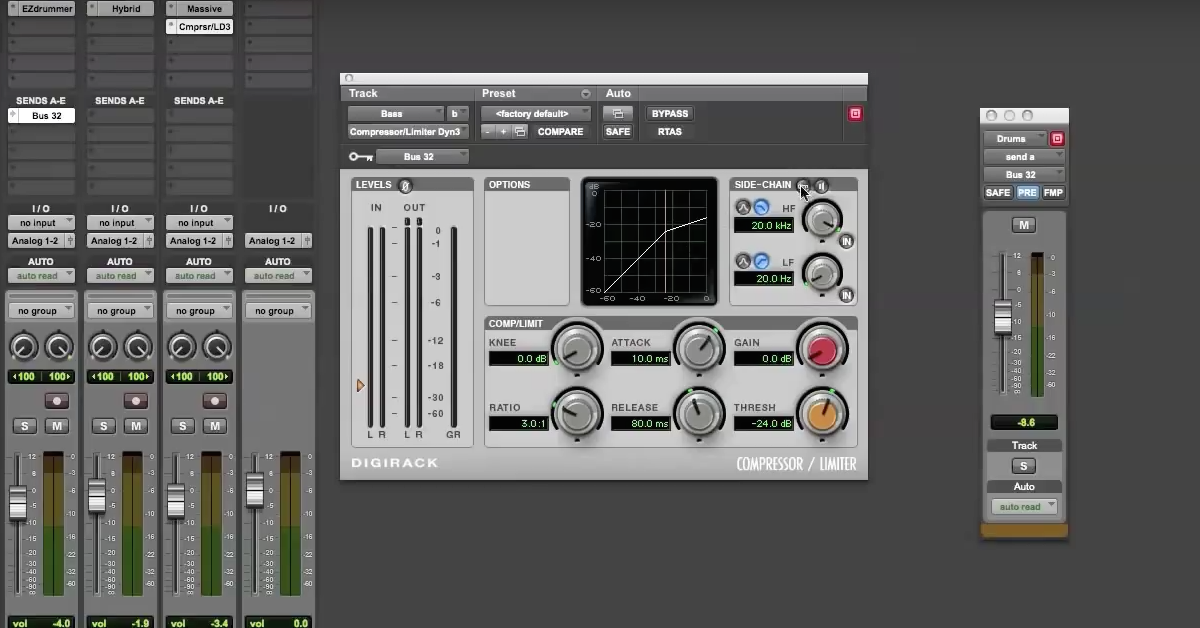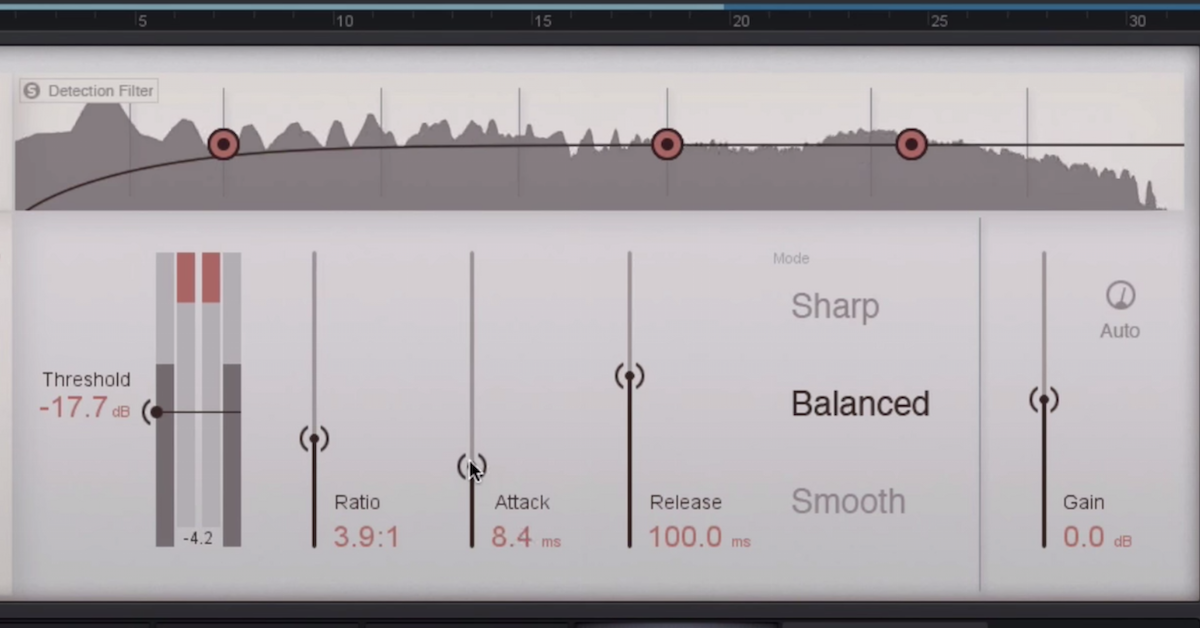The Basics of Compressor Sidechain and Detection
This is not a parameter to be adjusted, rather, it describes the input the compressor uses to evaluate when it’s time to compress.
Here, you see a simple block diagram of the signal flow through a compressor. The audio path through the compressor is what you use in your mix or master. The audio path to the detector is the one that triggers, or keys, the compressor.
When we change the threshold, ratio, attack, or release, it is always in relation to the signal feeding the detector. Usually, when you’re using a compressor, the signal that comes into the detector and feeds the threshold is exactly the same audio that you’re using in your mix or master.
This works well in most cases when we want compression. It’s also possible to change the signal present at the detector so that we change the behavior of the compressor and we achieve various effects. I’ll mention a few common effects here to get you started thinking about how to use the side-chain.
Ducking is a technique when we use one signal to trigger a compressor that will duck or turn down another. My voice is set to feed the side-chain, or key input to the detector circuit for a compressor on this music track.
[mix]
You’ll notice that each time I speak, the music level is reduced by the compressor.
[mix]
And when I stop speaking, the music level returns to the uncompressed level.
[mix]
Another technique is often referred to simply as “side-chaining,” or pumping.
[mix with pumping]
This shows up often in house, EDM, and other dance music forms, but can be used creatively in other styles too.
One simple way to get this effect is by using a kick drum track to trigger a detector on a compressor that’s sitting on the master buss.
De-essing is another form of side-chaining. The idea is to reduce high frequency energy when there’s too much of it coming from speech, high frequency percussion instruments, or something similar.
This is achieved by triggering the compressor with a filtered version of the audio, so only the high frequencies will cause the compressor to engage.






